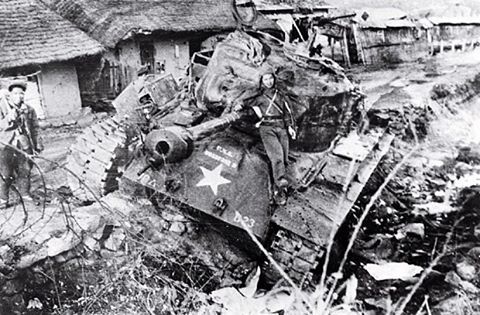
The numerically-superior North Korean forces destroyed isolated resistance from the 38,000 South Korean soldiers on the front before they began moving steadily to the south. The smaller South Korean Army suffered from widespread lack of organization and equipment and was unprepared for war. The North Korean force of 89,000 men moved in six columns, caught the Republic of Korea Armed Forces by surprise, and routed them. Main articles: Korean War § Police Action: US intervention, and Initial phase of the Korean Warĭuring the night of June 25, 1950, ten divisions of the North Korean People's Army launched a full-scale invasion of its southern neighbor, the Republic of Korea. North Korean troops eventually flanked and overwhelmed the US positions, and the rest of the task force retreated in disorder.

After the North Korean tank column had breached US lines, the task force opened fire on a force of some 5,000 North Korean infantry that were approaching its position, which held up their advance. Aside from a limited number of HEAT shells for the unit's 105 mm howitzers, crew-served weapons that could defeat T-34/85 tanks from the Soviet Union had not yet been distributed to the US Army forces in South Korea.Ī North Korean tank column equipped with ex-Soviet T-34/85 tanks overran the task force in the first encounter and continued its advance south. The task force lacked both anti-tank guns and effective infantry anti-tank weapons and had been equipped with obsolete 2.36-inch (60 mm) rocket launchers and a few 57 mm recoilless rifles. On July 5, 1950, Task Force Smith, an American task force of 540 infantry supported by an artillery battery, was moved to Osan, south of Seoul, the capital of South Korea, and was ordered to fight as a rearguard to delay the advancing North Korean forces while more US troops arrived to form a stronger defensive line to the south. The Battle of Osan ( Korean: 오산 전투) was the first engagement between the United States and North Korea during the Korean War.


 0 kommentar(er)
0 kommentar(er)
